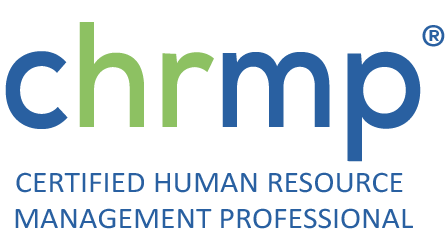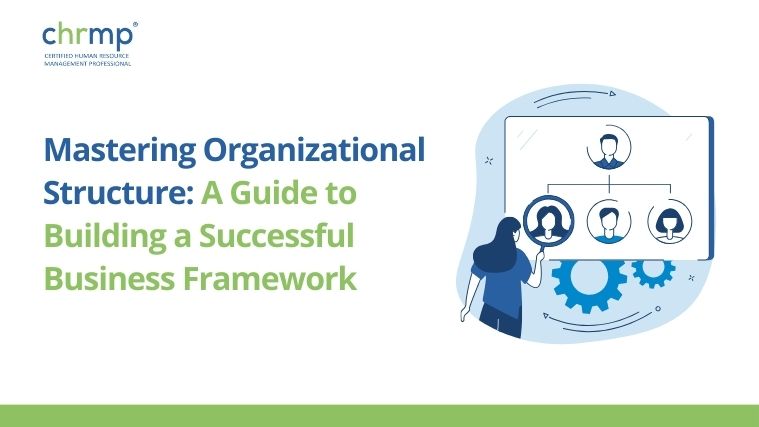Are you navigating the complexities of establishing an effective organizational structure for your business?
Thank you for reading this post, don't forget to subscribe!Understanding the nuances of organizational design is crucial in today’s rapidly evolving business landscape. This guide explores the different facets of company organizational structure, from the functional and matrix models to broader organizational development strategies.
By delving into the intricacies of company hierarchy and the benefits of a well-thought-out organizational chart, this blog will equip you with the knowledge to create or refine your company’s organizational chart. Discover how to leverage these insights for effective organizational design that enhances communication, boosts efficiency, and aligns with your strategic objectives.
Read on to transform your HR department structure and propel your company toward sustained success!
Table of Contents
ToggleWhat is Organizational Structure?
Organizational structure refers to the formal framework that outlines how activities are directed, coordinated, and controlled within an organization. It establishes the hierarchical arrangement of roles, responsibilities, and reporting relationships, acting as the blueprint or skeleton that provides clarity on who does what, how decisions are made, and how information flows within the company. This structure is essential for defining the formal system of authority and communication within an organization.
This strategic design, often depicted in an organizational chart, helps in aligning the company’s goals with its operational framework, facilitating optimal resource allocation and efficient communication across various levels. As companies evolve, the importance of a well-thought-out organizational design becomes paramount in supporting adaptability and competitive advantage in dynamic markets.
![Graphic of Organisational Chart]
Importance of Organizational Structure:
Clarity and Direction: A clear organizational structure defines roles and responsibilities, reducing confusion and boosting efficiency by ensuring employees understand their tasks and how they contribute to overall objectives.
Task Allocation: By outlining reporting relationships and communication channels, organizational structure ensures effective distribution of tasks and resources, minimizing duplication of efforts and maximizing productivity.
Coordination: Clear reporting lines and communication channels streamline coordination among departments and teams, fostering collaboration towards common goals and enhancing organizational effectiveness.
Supervision and Control: Organizational structure provides a framework for supervision, enabling managers to oversee work, maintain consistency, quality, and compliance with policies, ensuring alignment with organizational objectives.
Adaptability and Scalability: Well-designed structures allow companies to respond to changes, whether in growth, restructuring, or market shifts, while maintaining effectiveness and agility.
Resource Optimization: Organizational structure optimizes resource utilization by clarifying roles, reducing duplication, and improving coordination, thereby enhancing competitiveness and sustainability.
Elements of Organizational Structure
The elements of organizational structure are critical components that determine how a company functions on a day-to-day basis. Each of the following elements plays a significant role in shaping the internal dynamics of an organization.
1. Hierarchy
Hierarchy refers to the levels of authority within the organization, ranging from top executives to front-line employees. Each level has its own set of responsibilities and reporting relationships. The hierarchy provides clarity on the chain of command and helps in decision-making and communication flow within the organization.
2. Departments
Departments are divisions within the organization structured based on function, geography, product line, or customer type. Each department has specific responsibilities and is equipped to handle distinct aspects of the business. For instance:
- Functional Organizational Structure: Divides the company by functions such as marketing, sales, and HR.
- Geographic Structure: Organizes departments by geographical regions, useful for companies operating in diverse locations.
- Product-based Structure: Segregates departments according to product lines, enabling focused strategies and management.
3. Job Design
Job design involves specifying job roles within the organization, defining job titles, and describing the duties and responsibilities associated with each role. Effective job design is crucial as it helps employees understand their specific operational roles and how they contribute to the organization’s goals. This clarity supports recruitment, performance management, and career development within the company.
4. Span of Control
Span of control refers to the number of employees who report directly to a manager. This can vary widely across organizations:
- Wide Span of Control: Implies fewer managers are needed, which may reduce costs but can also dilute the quality of management.
- Narrow Span of Control: Ensures more direct supervision and potentially higher performance, but can increase organizational costs and complicate communication.
5. Centralization
Centralization refers to the degree to which decision-making authority is concentrated at the top of the organizational hierarchy. In a highly centralized structure, key decisions are made by top management, while in a decentralized structure, decision-making authority is distributed across various levels of the organization. Centralization impacts the speed of decision-making, agility, and employee empowerment.
6. Formalization
Formalization measures the extent to which the organization relies on rules and procedures to standardize behaviors and decisions. High formalization can ensure predictable, uniform responses across the company but may stifle creativity and adaptability. Low formalization might allow for more innovation and individual discretion but can lead to inconsistencies and inefficiencies.
7. Culture
Organizational culture encompasses the shared values, beliefs, and norms that define the way employees behave and interact within the company. Culture profoundly impacts all aspects of organizational life, from decision-making and risk-taking to employee engagement and customer service. A strong, positive culture can enhance performance and competitive advantage, while a weak or negative culture can hinder organizational success.
![Graphic of Elements of Organizational Structure]
Factors Affecting a Company’s Organizational Structure
Organizations can adopt various structures based on their size, complexity, and operational needs. These range from simple, flat structures where employees report directly to the CEO, to more complex, hierarchical organizational structures found in large multinational corporations with specialized departments. Whether it involves a structure that clearly delineates lines of authority or a matrix organizational structure that blends different functional areas for enhanced flexibility, the chosen structure significantly impacts the efficiency and effectiveness of the organization.
Various factors dictate the choice of an appropriate organizational structure, and understanding these influences is vital for any company aiming to optimize its operational effectiveness and align its workforce with its business objectives.
Company Size
The size of a company is a primary determinant of its organizational structure. Smaller companies often benefit from a flat or functional structure due to their simpler operational needs and fewer employees, which allows for quicker decision-making and more direct communication. As companies grow, the complexity of their operations typically increases, necessitating more layers of management to handle the expanded workforce and diversified tasks. Larger organizations may adopt hierarchical or divisional structures to manage this complexity effectively, helping to maintain order and streamline processes across different departments and locations.
Goals and Strategy
The strategic goals of a company significantly influence its organizational structure. A business focused on innovation and rapid growth might choose a more flexible structure, such as a matrix or network model, which can support faster decision-making and greater agility in responding to market changes. Conversely, a company with a strategy centered around efficiency and cost control might find a hierarchical structure more beneficial to enforce strict controls, reduce redundancies, and streamline operations. Aligning the organizational structure with the company’s strategic priorities ensures that the structure reinforces, rather than contradicts or hampers, the achievement of business objectives.
Industry Dynamics
The nature and dynamics of the industry in which a company operates can also dictate its structural choices. Industries that are highly dynamic and subject to rapid changes, such as technology or consumer goods, often require organizational structures that can respond quickly and adapt to new challenges and opportunities. In these cases, flexible structures like matrix or network models can be advantageous. On the other hand, industries with more stable and predictable environments, such as manufacturing or utilities, might benefit from traditional hierarchical structures that emphasize stability and efficiency.
Geographical Dispersion
Companies that operate in multiple geographical locations may adopt a divisional structure, which allows each region to operate semi-autonomously while still aligning with overall corporate objectives. This structure supports local management’s responsiveness to regional market conditions and cultural nuances, which can be crucial for global operations. Additionally, such structures can help manage the complexity and logistical challenges of operating across different time zones and legal environments.
Culture and Values
A company’s culture and values play a crucial role in shaping its organizational structure. An organization that values transparency, employee empowerment, and open communication might lean towards a flat structure that reduces barriers between staff and management. Such structures can help foster a more inclusive and collaborative environment. In contrast, companies that prioritize order, control, and authority might prefer a more hierarchical structure, which can provide clear roles, responsibilities, and lines of authority, thereby supporting a more disciplined approach to business.
Operational Needs
Finally, the operational needs of a company, including the need for cross-functional collaboration or geographic diversification, influence its choice of structure. Companies requiring high levels of cross-functional collaboration to deliver products or services might opt for a matrix structure, where employees have dual reporting lines and collaborate across departments. Similarly, organizations operating in multiple geographic regions might adopt a divisional structure, allowing each region to operate semi-autonomously while aligning with the broader corporate goals. This can provide the flexibility needed to tailor strategies to local markets while maintaining overall coherence within the company.
![Graphic of Factors Affecting Organizational Structure]
Types of Organizational Structure
Organizations choose their structure based on several factors including strategy, size, and industry demands. Each type of structure offers unique advantages and challenges. Here, we’ll delve into some common types of organizational structures along with real-world examples to gain a comprehensive understanding.
1. Functional Structure
In a functional structure, the organization is divided into departments based on their function. Each department specializes in a particular area of work, such as marketing, finance, or human resources.
Take General Motors, for instance. This automotive behemoth is structured into specialized departments such as engineering, manufacturing, and marketing, each focusing on their respective operational domains. The finance division is tasked with budgeting and financial planning, while HR is responsible for staffing and fostering employee relations, all organized by their functions.
2. Divisional Structure
A divisional structure is characterized by divisions organized around products, geographical regions, or markets. Each division operates as its own entity with its own resources and objectives, which can include separate manufacturing, sales, and marketing departments.
For example, let’s look at Ford Motor Company. They employ a geographical divisional structure, with divisions spanning North America, Europe, Asia Pacific, and other regions. Each division is tailored to cater to the unique needs and preferences of its respective market.
3. Matrix Structure
A matrix structure combines two or more different structures, typically the functional and divisional structures. Employees have dual reporting relationships – generally to both a functional manager and a project or divisional manager.
For example, at Philips, employees have the option to report to a product division head for project-related tasks and to a functional head for their professional development and management within their area of expertise.
4. Flat Structure
Also known as a horizontal structure, a flat organization has few or no levels of middle management between staff and executives. This structure encourages less supervision and more direct involvement of staff in decision-making.
An apt example here will be Valve Corporation, a video game developer that operates without traditional managers. Instead, teams naturally coalesce around projects, with employees selecting tasks based on their interests, fostering extensive collaboration and fostering innovation.
5. Hierarchical Structure
A hierarchical organization has multiple levels of management and staff, with a clear chain of command from top to bottom. This is the most traditional business structure, with power flowing vertically and accountability clearly defined.
Let’s see how Walmart exemplifies a traditional hierarchical structure in a large corporation. With a CEO at the helm, followed by senior management, middle managers, and finally store-level managers, it showcases a clear top-down organizational approach.
6. Network Structure
A network structure is more decentralized than other types of organizational structures. It is composed of individuals or organizations that operate independently but are connected through a central hub or some form of coordinating mechanism.
For instance, take Pixar, part of the broader Disney brand. It functions as a network, collaborating with various partners, collaborators, and external contributors who converge around projects, sharing their expertise and resources.
7. Holacratic Structure
Holacracy is a method of decentralized management and organizational governance, where authority and decision-making are distributed throughout a holarchy of self-organizing teams rather than being vested at the top of a hierarchy.
For example, consider Zappos, the renowned online shoe and clothing retailer. It stands out as one of the most prominent adopters of holacracy. Rather than relying on traditional managers, Zappos operates through approximately 500 circles, where employees hold roles across multiple circles based on their involvement in various projects.
![Graphic of Types of Organizational Structure]
Evolution of Organisation Structures in Response to Trends
The evolution of organizational structures is profoundly shaped by contemporary trends like remote work, digital transformation, and globalization. In response, companies are not just reconsidering where and how work gets done, but also who participates in decision-making and how they’re structured. These trends collectively drive a shift toward more agile, adaptable organizational frameworks.
Hierarchies are flattening, decision-making is decentralizing, and team-based structures are taking precedence to bolster responsiveness and foster innovation. Emerging models such as holacracy and agile methodologies are gaining ground, especially in fast-paced or fiercely competitive sectors.
This dynamic reshaping of traditional structures renders them more fluid and better aligned with the needs of today’s business landscape. Examining each trend’s impact reveals how companies are compelled to rethink and often overhaul their structures to maintain competitiveness and efficiency.
![Graphic of Evolution of Organisation Structures]
Remote Work
The rise of remote work, especially accelerated by the COVID-19 pandemic, has compelled many organizations to adjust their structures. Traditional hierarchical models that rely on physical oversight and in-person interactions are giving way to more flexible, flat structures. These adaptations aim to empower employees who are working from diverse locations, enhancing autonomy and speeding up decision-making.
Companies like Twitter and Shopify have adopted remote-first policies, adjusting their structures to support a distributed workforce effectively. This shift often involves leveraging technology to maintain communication and culture, as well as redefining job roles to fit remote work settings.
Digital Transformation
Digital transformation has permeated nearly every industry, influencing how organizations are structured. Businesses are integrating digital technology into all areas of their operations, which necessitates a structural overhaul to support new workflows, digital processes, and customer engagement strategies.
For instance, many companies are establishing dedicated digital units or integrating roles such as Chief Digital Officer (CDO) to drive digital initiatives. This structural change is not only about technology adoption but also involves fostering a culture of continuous innovation and learning to keep pace with digital advancements.
Globalization
As companies expand globally, they face the challenge of managing more complex and geographically dispersed operations. This has led to the adoption of more sophisticated organizational structures like the matrix or network structures. These models allow organizations to respond more adeptly to diverse market demands and regulatory environments by providing a flexible and adaptable management framework.
For example, multinational corporations like Nestlé use a matrix structure to manage their global operations, balancing efficiency with the need to adapt to local market conditions. This structure enables them to leverage global synergies while being responsive at the local level.
Common Challenges Businesses Face with Different Organizational Structures
Organizational structures, while essential for defining roles, responsibilities, and the flow of information within a company, can also introduce specific challenges. These challenges vary based on the structure chosen. Here’s a breakdown of some common issues associated with different organizational structures, along with potential solutions to mitigate these challenges:
Communication Complexity in Matrix Organizations
Challenge: In matrix organizations, where employees report to multiple managers across different projects or functions, communication can become convoluted, leading to misunderstandings and delays.
Solution:
- Implement clear communication protocols and tools to streamline information flow.
- Encourage regular cross-functional meetings and establish channels for open dialogue.
- Provide training on effective communication techniques can help employees navigate the complexities of matrix structures.
Confusion and Conflicts in Authority in Matrix Organizations
Challenge: Matrix structures, where employees report to both functional and project managers, often lead to confusion and conflicts in authority. This dual reporting can result in mixed messages and uncertainty about priorities and responsibilities.
Solution:
- Specify reporting lines and decision-making authority in detailed job descriptions.
- Provide intervention from HR when necessary to resolve conflicts effectively.
- Offer training to managers in conflict resolution and leadership to prevent escalations.
Innovation Stagnancy in Rigid Hierarchies
Challenge: Traditional hierarchical structures can sometimes stifle innovation and agility as they involve multiple layers of management. Decision-making can be slow, and lower-level employees may feel disconnected from the organization’s strategic vision.
Solution:
- Foster a culture of innovation by empowering employees at all levels to contribute ideas and take calculated risks.
- Flatten hierarchies by decentralizing decision-making and providing autonomy to teams.
- Establish dedicated forums or innovation labs where employees can experiment and collaborate on new ideas without fear of reprisal.
Resistance to Change in Traditional Organizational Cultures
Challenge: Companies with deeply entrenched traditional cultures may encounter resistance when attempting to adopt more agile or flexible structures.
Solution:
- Start by fostering buy-in from leadership and key stakeholders through effective communication and education about the benefits of organizational change.
- Introduce pilot programs or initiatives to demonstrate the positive outcomes of new structures.
- Encourage employee participation and feedback to ensure that the transition is inclusive and aligned with the organization’s values.
Potential Issues with Accountability and Overload at the Top Levels
Challenge: While flat structures promote open communication and quick decision-making, they can also lead to issues with accountability and overload at the top levels, as fewer managers are available to supervise operations.
Solutions:
- Utilize performance management systems to establish and track goals for teams and individuals.
- Ensure clarity regarding responsibilities and performance measurement criteria.
- Offer training programs focused on enhancing employees’ capacity to manage their workloads and duties autonomously.
Maintaining Coherence and Quality Across Diverse Entities
Challenge: Network structures, which rely heavily on external partnerships and alliances, can face challenges with coherence and maintaining quality across different entities.
Solutions:
- Implement standard operating procedures and quality control measures.
- Conduct regular audits and feedback loops to maintain high standards across network partners.
- Enhance communication tools and systems for seamless information flow.
Ambiguity in Decision Rights and Responsibilities
Challenge: Holacracy, which distributes decision-making across self-managed teams, can sometimes result in confusion about decision rights and responsibilities, potentially leading to delays and inefficiencies.
Solutions:
- Document all governance rules and decision-making processes centrally.
- Conduct regular training sessions to clarify employee roles and decision-making authority limits.
- Adjust the structure based on feedback and evolving business needs to maintain agility.
Employee Burnout in Agile Environments
Challenge: Agile organizational structures, characterized by rapid iterations and frequent changes, may increase the risk of employee burnout due to heightened pressure and workload volatility.
Solutions:
- Offer adequate resources and support for managing workload fluctuations.
- Identify and address signs of burnout early on through proactive measures.
- Establish mechanisms for regular feedback and performance evaluation.
Role of HR in Shaping Organizational Structure
Human Resources (HR) is integral not just in managing a workforce but in strategically shaping the organizational structures that govern how a company functions. As architects of structure, HR professionals ensure the alignment between an organization’s structure and its overall business strategy. This role involves a variety of critical functions, from designing and implementing structures to guiding leadership and employees through transitions.
Below are key areas where HR’s impact on organizational structure is most profound:
Strategic Role
HR’s involvement in organizational design is crucial. They play a strategic role by aligning the structure with business objectives and the dynamic needs of the workforce. This involves analyzing and understanding the interplay between different organizational needs and employee capabilities, which allows HR to develop structures that optimize both human and material resources while driving performance.
Implementation and Revision
When new structures are proposed, HR leads the implementation, managing the change process meticulously. This includes clear communication of the changes to all stakeholders, comprehensive training for employees, and efficient management of the transition phase. Additionally, HR continuously monitors the effectiveness of the structure in place and makes informed recommendations for necessary revisions, ensuring the organization can adapt to growth and changes in the external business environment.
Training and Facilitation
A significant part of HR’s role in organizational structure is the development and delivery of training programs that equip leaders and employees to function effectively within the framework. These programs often focus on leadership development, conflict resolution, and enhancing communication skills. Beyond training, HR facilitates workshops and team-building sessions that foster understanding and cooperation across various levels of the organization, ensuring smooth operational flow and bolstering the organizational culture.
Tools and Resources for HR Professionals
HR professionals are equipped with a range of tools and resources that enable them to effectively analyze, design, and manage organizational structures. These tools not only help in the creation and visualization of structures but also support strategic planning and implementation processes. Below, we explore some of these essential tools and resources in detail:
Software Tools
OrgChart: OrgChart is a specialized software tool used for creating, maintaining, and visualizing organizational charts. This tool is particularly valuable in HR for mapping out the entire organization’s structure clearly and concisely, allowing for easy adjustments and updates as the organization evolves.
Human Resource Information Systems (HRIS): Platforms such as BambooHR and Workday are critical for HR management. These systems allow for comprehensive management of employee data, support strategic HR planning, and facilitate essential HR functions from recruitment to retirement. They are instrumental in aligning HR strategies with organizational structure needs, providing analytics for decision-making, and enhancing overall HR efficiency.
Frameworks and Methodologies
McKinsey 7S Framework: This framework is a management tool that helps HR to align organizational elements for optimal performance. It ensures that strategy, structure, systems, shared values, skills, style, and staff are harmoniously aligned, which is crucial when designing or revamping an organizational structure.
Balanced Scorecard: Used to perform strategic management, this tool helps HR measure and provide feedback on organizational performance. It translates organizational strategy into a comprehensive set of performance measures that provide the framework for a strategic measurement and management system.
SWOT Analysis: A strategic planning tool used to identify Strengths, Weaknesses, Opportunities, and Threats related to business competition or project planning. This is particularly useful in organizational structure planning to ensure the current structure is capable of responding to changes in the external environment or internal growth dynamics.
Project Management Tools
Asana, Trello, and Microsoft Project: These tools are vital for managing the complex projects associated with organizational restructuring. They help HR professionals to plan, organize, and track the progress of restructuring projects, ensuring that tasks are completed on time and stakeholders remain informed. These tools facilitate collaboration among teams, streamline communication, and maintain documentation, making them indispensable for project management in HR.
Future Outlook of Organizational Structures
As we look towards the next decade, organizational structures are poised for significant evolution, driven by rapid technological advancements, changing workforce demographics, and global economic dynamics. HR professionals will need to anticipate and adapt to these changes to ensure organizational resilience and effectiveness. Here’s a closer look at the anticipated changes and how HR can prepare to manage them:
Anticipated Changes
The next decade is likely to see increased flexibility in organizational structures as businesses continue to adapt to globalization, technological advances, and changing workforce expectations. Structures may become more fluid, with an emphasis on project-based teams and less rigid departmental boundaries.
Adaptation to Remote Work
The shift towards remote and hybrid work models will likely continue, necessitating structures that support collaboration and communication across distances. This may lead to more networked and decentralized organizational models.
Rise of AI and Automation
As artificial intelligence and automation become more integrated into business operations, organizational structures will need to accommodate new roles and redefine existing ones. HR will play a key role in managing this transition, ensuring that employees are trained for new skills and adapted to more technologically advanced workplaces.
Preparation for HR Professionals
To manage these changes, HR professionals will need to stay informed about technological trends and global business practices. Continuous learning, flexibility, and strategic planning will be essential. HR professionals should also focus on developing soft skills within the workforce, such as adaptability, problem-solving, and resilience, to navigate the evolving business landscape effectively.
Conclusion
Choosing the right organizational structure is vital for any company’s success, aligning with its size, goals, industry, culture, and operational needs. A well-implemented structure not only fosters efficiency and innovation but also helps in adapting to the ever-evolving business environment, thereby ensuring sustained success.
This comprehensive guide aims to equip you with the knowledge to evaluate and implement an effective organizational structure. By understanding the various structures and their impacts, you can strategically position your company for optimal performance and growth.





